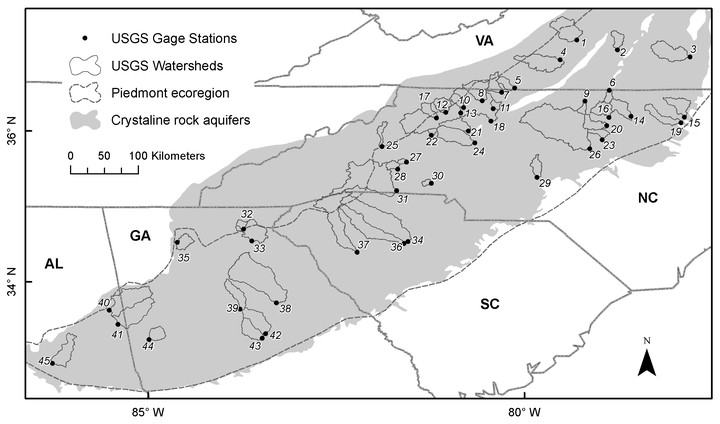Relationships among forest type, watershed characteristics, and watershed ET in rural basins of the Southeastern US

Abstract
Evapotranspiration (ET) typically accounts for 60-70% of precipitation in rural basins of the Southeastern United States. Since 1930, substantial reforestation of former croplands has occurred in the Piedmont and Appalachian Highlands in this area, leading to an expected increase in ET and reduction in baseflow. This study examines relationships between basin vegetative cover, abiotic factors, and water-budget partitioning in 45 USGS-gaged rural basins in the Southeastern US. Data are for the 1982 -2014 water years with watersheds having ≥ 40% forest cover, crystalline-rock aquifers, minimal basin water export, and no large reservoirs. Long-term annual ET is calculated using the water-budget equation (ET=P-Q), which ranges from 641 to 971 mm/yr. (median 824). Vegetative cover and other basin variables are regressed against ET to quantify the effects of vegetative and forest types. Budyko analysis is employed to compare the watersheds and to evaluate factors affecting residuals. Regression analysis indicates that ET behavior is best explained by abiotic factors (i.e., precipitation and temperature) but forest-cover type also has some effect. Evergreen forest cover is less common than deciduous or mixed forest but has a positive relationship with ET, while deciduous and total forest have negative relationships with ET. Comparison of water-balance and Budyko-estimated ET indicates that deciduous and total forest are associated with negative residuals while evergreen is not significant. These results show that: forest cover effects on basin ET are complicated; forest-cover type is important for water-yield management in this region, and abiotic basin characteristics exert stronger control than forest cover on ET.